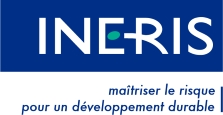Phthalates are a family of synthetic organic chemicals that are mainly used as plasticizers in the polymer industry. They make PVC (Polyvinyl Chloride) flexible and easily processable and thus allow to manufacture a wide variety of articles and ordinary consumer goods (textiles, various decorative objects, packaging, shoe soles, furniture, coatings floor and wall, bags, inflatable pools, ...).
They can also be used more marginally outside PVC, for example in ceramics (especially for electronic applications), or to control materials bonding processes (e.g. aeronautics industry)
There are about ten main phthalates, including "low molecular weight" phthalates (DEHP, DBP, DIBP and BBP, historically more used) and "high molecular weight" phthalates (DINP, DIDP, DPHP, DIUP, and DTDP , which are the most used today). Low molecular weight phthalates are highly regulated due to their confirmed reprotoxicity and to the endocrine disrupting nature of DEHP. Some high molecular weight phthalates are also suspected to be reprotoxic.
In these webpages we present information on various families of substances that are alternatives to phthalates (esters, citrates, benzoates, etc.), or on alternatives to materials that require phthalates, by illustrating them with accurate examples of substitution from concrete applications in supply chains. To facilitate access to a synthetic vision, a summary table is regularly updated and proposed on the site.
Do not hesitate to share your experiences of substitution or your proposals of alternatives via the Contact section!


